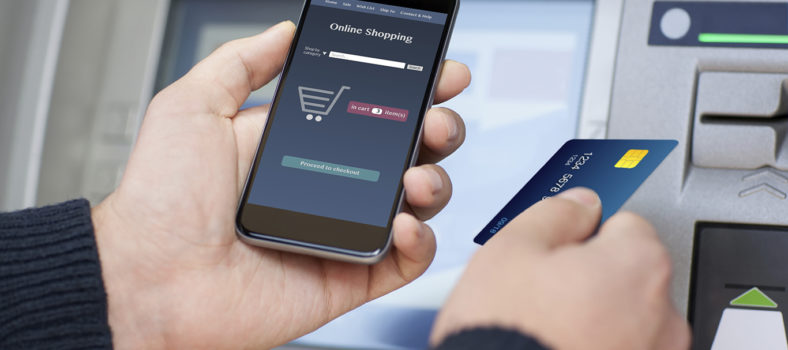 By Bill Waid
By Bill Waid
Across industries companies are waking up to the fact that customer experience (CX) is the pillar on which their fortunes rest. Consumer expectations are on the rise as they demand highly personalized engagement and in real-time.
Fortunately, there is an overwhelming amount of data available which can be leveraged to better meet those expectations. Studies like from Qualtrics have found that investing in CX initiatives can up to double their revenue in as little as 36 months.
As the financial services industry strives to meet consumer expectations, traditional banks and challenger FinTechs are turning to advanced analytics and digital decisioning in order to gain market share.
According to Forrester, “A key challenge of digital business is deciding what to do in the customer’s moment of need — and then doing it. Digital decisioning software capitalizes on analytical insights and machine learning models about customers and business operations to automate actions… for individual customers through the right channel.”
Ideally, organizations are able to gain customer insights and act at the exact right moment. The core requirement to achieving this goal is access to greater amounts of data, from disparate sources and in a timely manner. With this data, financial institutions (FIs) can automate key decisions around many interactions and continuously improve those decisions with fresh insights.
There are several areas where digital decisioning can be applied.
Streamlined onboarding
Digital decisioning can enable and expedite online account opening, from chequing and savings to credit cards and loans. It’s not unusual for customers to never step into a brick-and-mortar location in the onboarding process.
Automating routine processes not only reduces cost it also supports customers who increasingly prefer digital interactions. By using additional consumer data beyond credit payments and scores, such as savings and non-loan payments, banks are able to better identify creditworthy consumers.
Speedy response
Consumers are used to 24/7 real-time access and support from the retail sector and often expect the same from other industries. With digital decisioning, banks can offer products of interest to a customer at any hour of the day, whenever they access their account.
With more data, banks can make faster and more accurate decisions. Customers are looking for banks that proactively identify their needs and are prepared to offer those solutions with self-service options. Ideally, your customers should be a few clicks away from an automated approval.
Improved fraud detection
As real-time payments continue to grow in use with customers accessing and sending funds from a variety of devices, we’ve seen new forms of financial crime targeting mobile payments.
Thankfully, FIs are leveraging anti-money laundering (AML) machine learning models and analytics platforms, such as Falcon X, to streamline both fraud detection and AML processes. As a result, banks improve efficiencies by merging fraud and compliance while protecting their customers by detecting and preventing criminal activity before real-time transfers occur.
Additional products and services
Consumers can also be presented with ways to improve their financial health — from tips on improving their credit scores — to tracking spending or saving for retirement. FIs can use digital decisioning to show personalized suggestions for tools, accounts or even advisory services to help achieve their financial goals.
Forrester senior analyst Vijay Raghavan said: “By using predictive analytics and machine learning, insights are now dispensed in real time, with a focus on helping customers look ahead by providing alerts and recommendations on what to do next or even acting on behalf of the user. By 2022, leading wealth management firms will be doing the same, using digital decisioning software to make asset allocation, investment selection and tax recommendations to investors. Investors will be able to bank, save and invest, monitor their financial goals and receive intelligent advice from digital decisioning software through a single interface.”
Connecting the business
A decision management platform is the connective tissue for FIs to transform data into insightful decisions while automating value-creating actions. This platform approach creates efficiencies with a connected asset repository that is used across the business, from retail banking to credit cards to mortgage loans.
Within this collaborative environment, IT, data scientists, analysts and business users have visibility into where decision assets are being used, how they impact decisions and how they’re being improved. The platform aligns all stakeholders on how best to use the data to get the most relevant customer insights that will drive the right actions.
FIs can also re-purpose decision and analytic assets because the platform creates a core set of customer insights that can be used for different decisions. When one decision is successfully automated, it is easier and faster to apply that model and automate additional decisions. This can reduce the cost for future initiatives.
By re-using the assets and models, the more initiatives that are launched, the more growth you can drive with a smaller, incremental expense. Banks and FinTechs can accelerate time-to-value and claim a vastly better revenue-to-expense ratio.
Re-purposing decision assets also increases consistency across the organization and throughout the customer life cycle. As a result, customer interactions will share a unified voice across all line of business.
Customer expectations are going to continue to evolve driven by choice. Digital decisioning enables FIs to not only deliver, but perhaps overdeliver on the CX. Financial institutions are banking on access to unparalleled types and volumes of data, driving real time, highly relevant and personalized insights in order to ultimately grow their market share. Any organization that isn’t moving toward this goal will be left behind. Don’t let it happen to you.
Bill Waid is general manager, FICO Decision Management.
Keys to success
By relying on automated, digital decisioning driven by advanced analytics, innovation is progressing at a rapid pace around the financial services world today. To achieve the most out of digital decisioning there are five keys that will open the doors for financial institutions to success.
1. Adopt a unified, scalable decision platform across the enterprise that optimizes and monetizes the use of people, data and analytics.
2. Create personalized customer treatments while addressing economic, business and regulatory challenges.
3. Empower business users to create and manage the strategies, rules and analytics that drive decisions and actions: without IT intervention.
4. Re-use connected decision assets across the customer lifecycle to improve decisions, while making them transparent and explainable.
5. Validate decisions before they are put into production, with dashboards displaying predicted and compared-to results.
By applying these principles, banks can improve agility, deliver profitable decisions at scale and innovate faster, while reducing risk. Using digital decisioning and advanced analytics, we’ve had customers experience:
• Increased revenue: one financial institution grew bookings by 29 percent;
• Increased profits: one lender improved profits for personal lines of credit by 300 percent; and
• Reduced risk: another lender used just 31 days of data to improve risk predictiveness by 45 percent.

